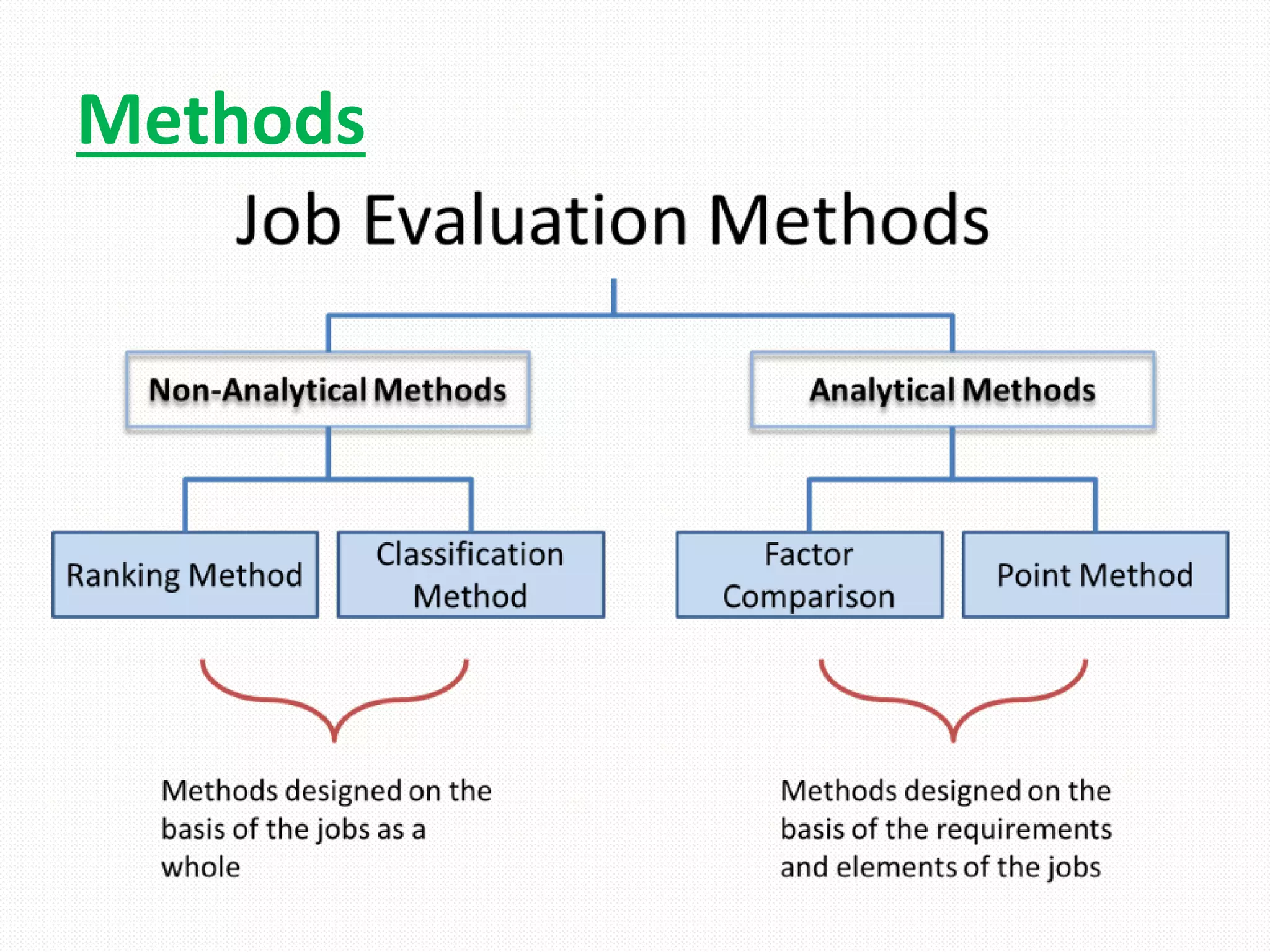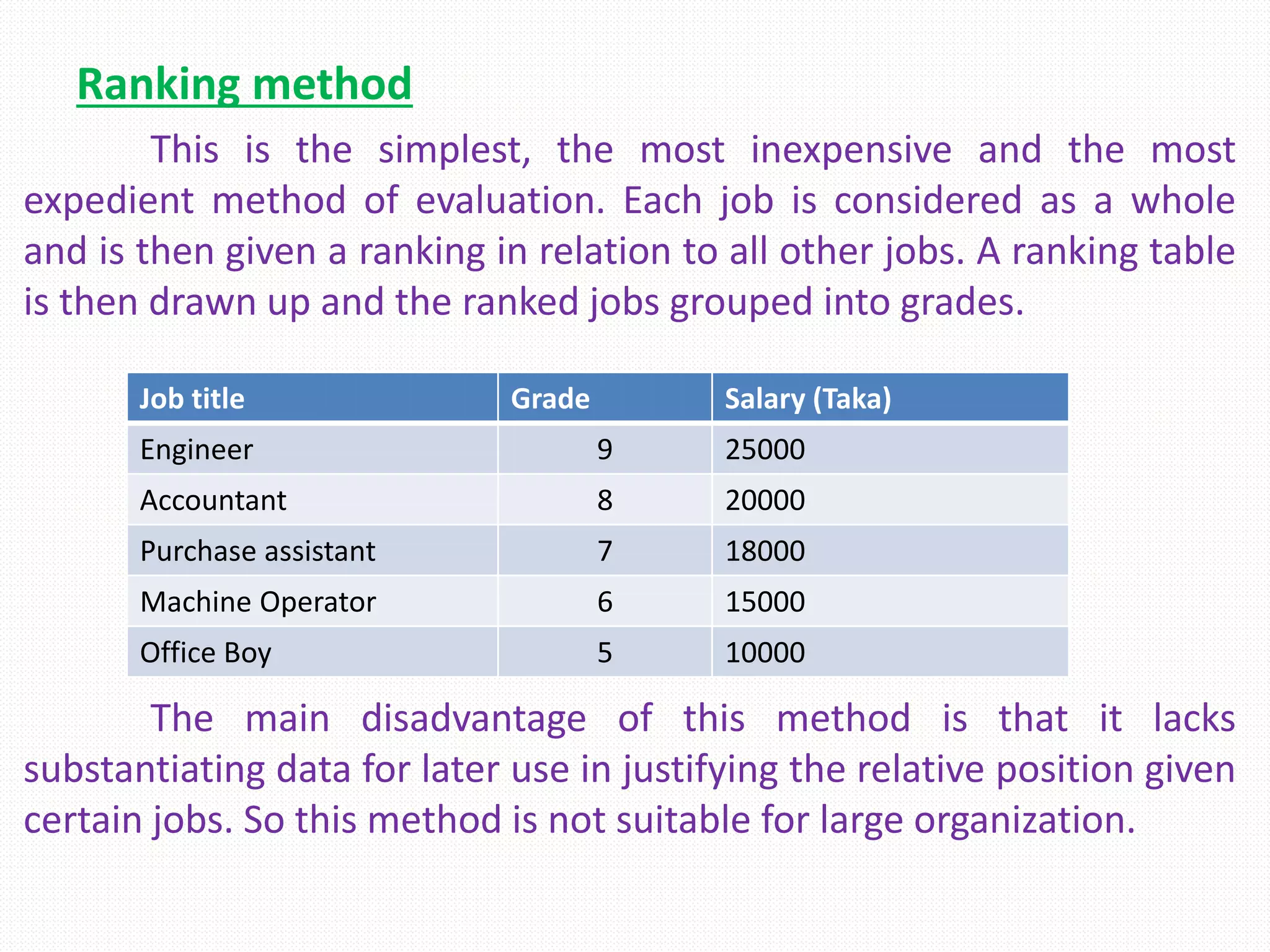The document outlines the process and importance of job evaluation within organizations, detailing methods such as ranking, classification, point method, and factor comparison. It emphasizes the need for fair wage distribution based on job worth, ensuring minimal discrimination while providing structured guidelines for evaluating different roles. Ultimately, an effective job evaluation scheme must be carefully considered and aligned with market demands and organizational conditions.

















